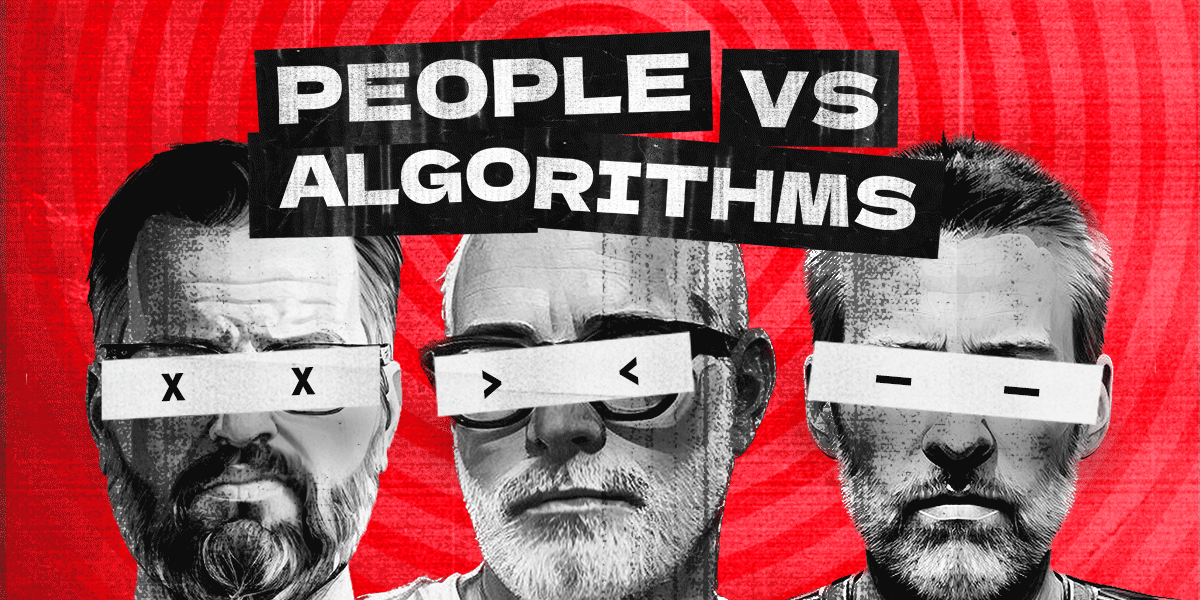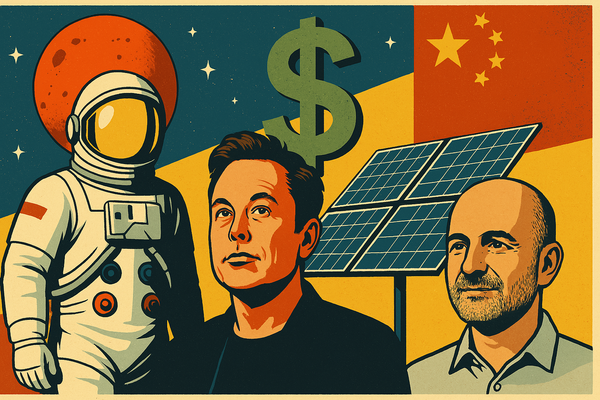The agony of the news apps

Next week, on Thursday, Jan 25 from 1-2pmEST, The Rebooting is holding an online forum to discuss the outlook for publisher subscriptions in 2024. I’m going to be joined by Bloomberg Media’s chief digital officer, Julia Beizer, and Max Tcheyan, Puck’s chief strategy officer. The session will be followed by a View from the Top with BlueConic principal success manager Will Barker to discuss the findings of the subscriptions research project we recently completed.

A new vertical video player for publishers

EX.CO’s new vertical video player for publishers has a first-of-its-kind, interactive, and intuitive UX, inspired by the video experience on social platforms that audiences know and love. It is a fully optimized vertical player, built for the open web - both mobile and desktop consumption. Showing comparable performance to EX.CO’s horizontal player from a monetization perspective, the new vertical player delivers 17% more video engagement than traditional horizontal players, on average and includes familiar swiping gesture controls so users can easily navigate between videos.
The agony of the news apps

There are ideas in digital media that make sense on paper and never work in reality. Some notable examples:
- Paying people for use of their data.
- Paying people to watch ads
- Micropayments for news
- News aggregation apps
On the surface, all make perfect sense. It isn’t hard to make the case for the consumer need. The problem is while the consumer need is real, the market isn’t as large as the people who feel passionate about their personal desire for a product in these areas, and the money involved is too small as a result.
The news aggregation app graveyard got more crowded late last week, as Instagram founder Kevin Systrom threw in the towel on the broadly well-received Artifact news aggregation app that promised to use, what else, AI in order to sort through the mess of news articles to create a “TikTok for news.” (This used to be the “Pandora for news.”) It lasted just a year. Silicon Valley loves to fail fast and worships at the altar of TAM (total addressable market). So I would assume Systrom ran the numbers and quickly realized it would take forever to build anything more than a niche business. “The market opportunity wasn’t big enough,” Systrom wrote.
Artifact joins other failures to catch on. Circa promised to reinvent news with a different format. Summly was a personal favorite, founded by a tech wunderkind as a way to deliver just the amount of news people need. Yahoo bought it for $30 million in 2013, rebranded it Yahoo News Digest and naturally let it flounder before taking it out back in 2017. Flipboard has been at it for 13 years now. CNN was going to get in on this with Zite. SmartNews has struggled to replicate its success in Japan in the U.S. market. One publishing executive told me at CES they don’t see much of any traffic from it. Axel Springer is closing Upday, an aggregation app it spent heavily building, in favor of… AI. Even The New York Times has a fail in this category with the demise of its NYT Now app, which was shuttered in 2016.
News junkies lament the lack of an aggregation app that isn’t Twitter/X. I am an extreme case. I want to spend far less time on X because I find the constant bickering and anger a pointless way for adults to spend their time. And yet, X is still the best single source. If only Google didn't screw up Google Reader. Apple News, helped with the acquisition of Texture in 2018, has shown promise, although it will never get all that much attention from Apple because, again, the market isn’t very big. And it’s hard enough to make money off news without factoring in syndication deals. This is why it was an easy decision for Facebook to mostly walk away from news.
The market will likely erode further as AI becomes more proficient at parsing real-time information to provide people with personalized news information. The deals needed to make this work will enrich plenty of lawyers.

Sailing the Cs together

Communications. Content. Community. They play an outsize role in brand-building, so why are they so often siloed off from each other? Codeword’s [waves arms] whole thing is building integrated programs for global brands, so your comms are supported by breakthrough content, your content goes further with some earned media juice, and everything works together to turn your customer base into a real community.
A brand is more than the sum of its parts. Let’s see what we can build.
CES, Ackman’s war, news app fails

This week on People vs Algorithms, we discuss why news aggregation apps never work out. There’s some reassurance that tech entrepreneurs find the news business so difficult. Other topics:
- A report from CES, where I spent 36 hours and didn’t see a single robot.
- The Bill Ackman-Business Insider feud continues, offering a microcosm into the growing divide between the most powerful people in society and the media writ large.
- The viral Cloudflare firing and the long unwinding of the tech hiring boom as a potential harbinger of what’s to come as companies inevitably follow SIlicon Valley’s lead just as they did with the open offices, free snacks and silly nicknames for workers.
Listen to PvA on Apple, Spotify or other podcast platforms. Thanks to “galwaylady” for the four-star Apple review and feedback that Troy has “a sexy voice.”
The more-with-less era
The Boss Class expects AI job cuts to start coming this year. Notably media and entertainment execs led the pack with over 30% anticipating job cuts this year.
- Google’s cutting hundreds from its ad sales division and at Youtube, part of Silicon Valley’s overall pivot to efficiency. These cuts are coming as Google’s ad business thrives.
- From ZIRP to VORP: The year of efficiency becomes an era.
- Sign of the times: Even the MBAs are seeing a more precarious existence. The evaporation of formerly safe career paths will push more people into choosing an independent path.
The AI era
ChatGPT might be a sensation, but it’s also a slightly disappointing one. I can’t say it has remade how I go about work, much less life.
- Time owner and Salesforce CEO Marc Beniof is all-in on AI but he also believes “all the training data has been stolen” to build LLMs.
- AI will get blamed for “killing search,” but the SEO glue factories have made web search far less useful.
- And there’s plenty of blame to go around, just look at the “premium” brands who are clogging Google News with gambling spam.
- Search has already gotten far less reliable. Red Ventures has seen CNET’s traffic whither, and now it’s hoping to get half of the $500 million it paid for CNET just a couple years ago.
- To get a temperature check for where AI is, check out Benedict Evans’ new deep dive into the topic.
Legacy media’s transition
Outside of football, live TV is a dead man walking. The Emmys drew a paltry 4.3 million viewers. This is an awards show problem – a completely outdated format – but another reminder of the truism that change comes slowly and then all at once.
- CNN’s new boss has a new plan for the broadcaster. It hits all the right notes, but it comes down to a simple question: Can CNN get millions of people to pay for its content?
- Streaming is confronting a vastly changed environment. TV has become a delivery vehicle for the NFL, giving NBC Universal a Pyrrhic victory by “forcing” 28 million people to sign up to watch the Chief-Dolphins game last weekend. Expect the mother of all churn spirals in the weeks to come. Might be time to go to call to cancel.
- Forbes is doing something with Web3 that might appeal to some but leaves me wondering why.
- Billionaires continue to prove they’re not saviors of the news business, as the mess at the Los Angeles Times shows. But they’ll keep investing in media because they’re into power.
- The Baltimore Sun, another formerly formidable mid-market paper, has a non-billionaire owner who doesn’t seem like he understand the business, or even bothered to read it much.
- Condé Nast is putting PItchfork under GQ, heralding the end of the road for the indie music brand.
Independent media’s rise
Substack is going through a rough patch, losing top writers over a variety of issues, including the Nazis. But beneath all this is a need to change its revenue model. Apparently it is already experimenting with helping writers broker ad deals as part of “an experimental pilot program.”
- The Free Press is boasting a 14% free-to-paid conversion rate, with 77,000 paid subscribers out of an email list of 540,000.
Etc
- Kyle Chayka’s new book zeroes in on algorithmic sameness, which AI will only exacerbate and likely trigger a reaction.
- It’s time to give up hope when a podcaster joins a presidential cabinet.
- 2024 prediction: Brands will step back from taking political stances on every issue because an ice cream company isn’t going to solve Middle East peace.

Join us on Thursday, Jan 25, from 1-2pmEST
Send me a note with your feedback: bmorrissey@therebooting.com




